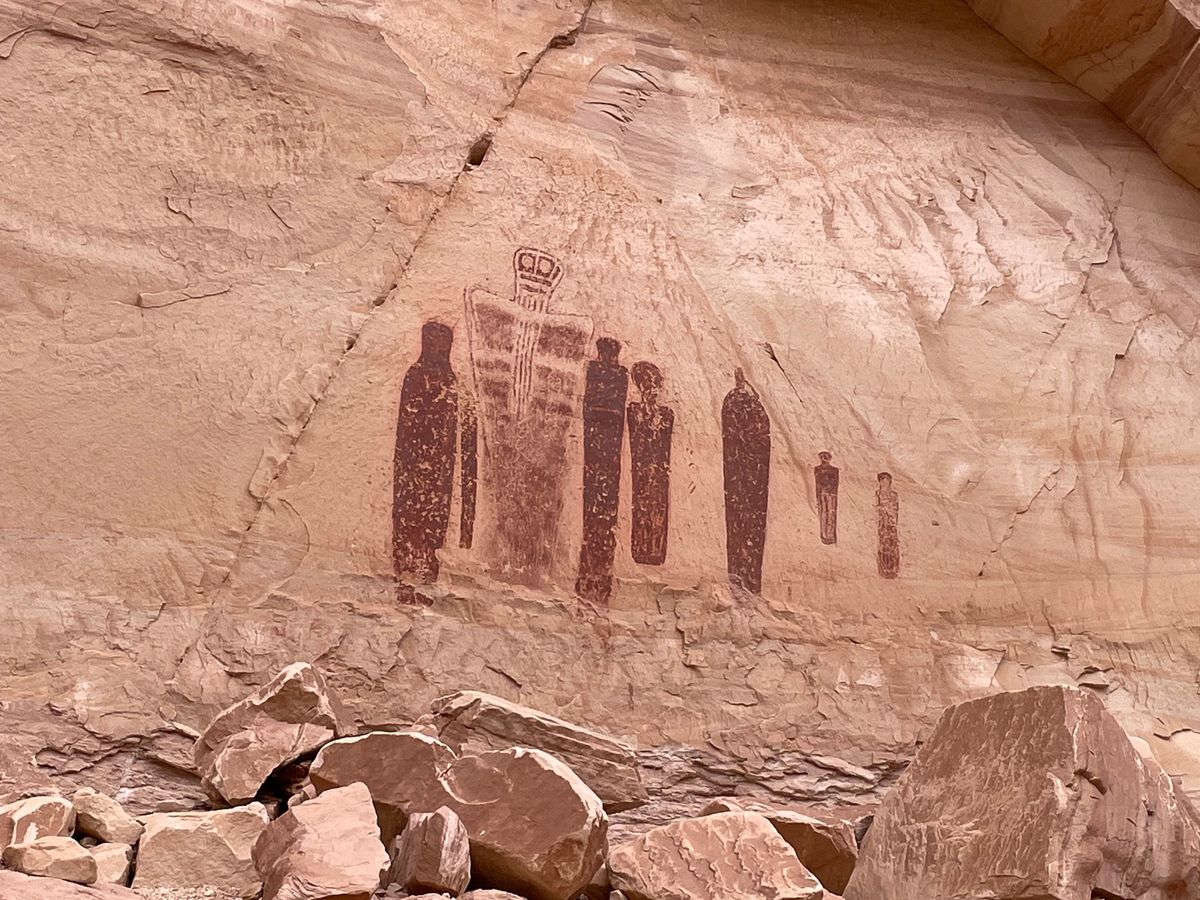Secrets Of Utah’s Canyonlands Pictograph Galleries

Have you ever wondered about the hidden stories etched into the rocks of Utah's Canyonlands? These ancient pictograph galleries hold secrets of past civilizations, offering a glimpse into the lives of those who once roamed these lands. Imagine standing before a rock face adorned with mysterious symbols and figures, each telling a tale of survival, spirituality, and community. These artworks, created by Native American tribes, are not just drawings but a connection to history. Visiting these sites feels like stepping back in time, where every mark on the stone has a story waiting to be discovered. Ready to uncover the mysteries of Canyonlands' pictographs? Let's dive in!
Discovering the Hidden Art of Utah's Canyonlands
Utah's Canyonlands are a treasure chest of ancient art. These pictographs, painted by Native American tribes, tell stories of a time long past. Let's explore some of the most fascinating galleries hidden within these rugged landscapes.
1. Horseshoe Canyon
Horseshoe Canyon is home to the famous Great Gallery. This site features life-sized figures that seem to float on the rock walls. The Barrier Canyon Style art here is over 3,000 years old.
- Great Gallery: The most iconic panel in Horseshoe Canyon, showcasing ghostly figures with intricate designs.
- High Gallery: Located above the Great Gallery, this site offers a unique perspective on the ancient art below.
2. Sego Canyon
Sego Canyon boasts a mix of pictographs and petroglyphs from different cultures. The artwork here spans thousands of years, providing a visual timeline of human history.
- Fremont Culture Art: These pictographs feature trapezoidal figures with detailed headdresses and jewelry.
- Ute Art: More recent additions include depictions of horses and riders, reflecting the arrival of Europeans.
3. Buckhorn Wash
Buckhorn Wash is known for its extensive rock art panels. The pictographs here are well-preserved, offering a vivid glimpse into the past.
- Buckhorn Panel: This long panel features a variety of figures, including animals and abstract shapes.
- Warrior Panel: Depicts armed figures, possibly representing ancient battles or ceremonies.
4. Newspaper Rock
Newspaper Rock is a state historic monument covered in hundreds of petroglyphs. This site is like an ancient bulletin board, with messages carved over centuries.
- Main Panel: Features a dense collection of symbols, animals, and human figures.
- Side Panels: Smaller sections around the main panel, offering additional insights into the lives of ancient peoples.
5. San Rafael Swell
The San Rafael Swell is a remote area with numerous rock art sites. The rugged terrain adds to the sense of adventure when exploring these hidden galleries.
- Black Dragon Canyon: Named for a large, dragon-like figure painted on the canyon wall.
- Head of Sinbad: Features a variety of pictographs, including a famous panel known as the "Pictograph Cave."
6. Nine Mile Canyon
Nine Mile Canyon is often called the "world's longest art gallery." This canyon is filled with thousands of petroglyphs and pictographs, making it a must-visit for rock art enthusiasts.
- Big Buffalo Panel: Showcases a large buffalo surrounded by smaller figures.
- Great Hunt Panel: Depicts a detailed hunting scene with numerous animals and hunters.
7. Moab Area
The Moab area is not just for adventure sports; it also has some incredible rock art sites. These pictographs are easily accessible and offer a glimpse into the region's rich history.
- Courthouse Wash: Features large, red figures painted on a cliff face near Arches National Park.
- Potash Road: A scenic drive that passes several rock art panels, including the famous "Birthing Scene."
8. Capitol Reef National Park
Capitol Reef National Park is a lesser-known gem with stunning rock art. The park's remote location means fewer crowds, allowing for a more intimate experience with the ancient art.
- Fremont Petroglyphs: Located near the park's visitor center, these carvings depict human and animal figures.
- Pictograph Panel: A short hike leads to this panel, featuring vibrant red and yellow figures.
9. Parowan Gap
Parowan Gap is a natural pass with a high concentration of petroglyphs. The gap's unique geology made it a significant site for ancient peoples.
- Zipper Glyph: A long, zigzagging line that may represent a calendar or map.
- Sun Dagger: A petroglyph that aligns with the sun during solstices, possibly used as an ancient calendar.
10. Canyonlands National Park
Canyonlands National Park is a vast wilderness with numerous rock art sites. The park's rugged beauty adds to the allure of its ancient pictographs.
- The All American Man: A colorful figure painted in red, white, and blue, possibly representing a shaman or warrior.
- Aztec Butte: Features several small panels with intricate designs, accessible via a short hike.
Embracing the Ancient Art
Utah's Canyonlands Pictograph Galleries offer a unique glimpse into ancient cultures. These rock art sites, scattered across the rugged landscape, tell stories of people who lived thousands of years ago. Visiting these galleries isn't just about seeing art; it's about connecting with history. The vibrant colors and intricate designs reveal much about the beliefs and daily lives of those who created them.
Exploring these sites requires respect and care. Always follow guidelines to preserve these treasures for future generations. Whether you're an avid hiker or a history buff, the pictographs provide a fascinating experience. They remind us of the creativity and resilience of early inhabitants.
Plan your trip, pack your essentials, and get ready to step back in time. The Canyonlands await, offering both adventure and a deep connection to the past.

